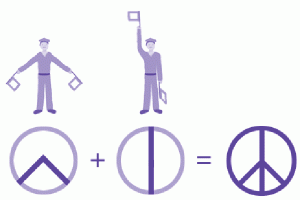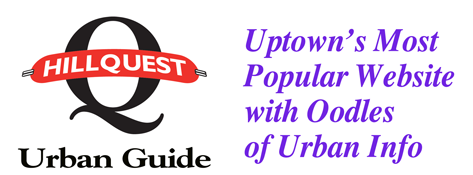One of the most widely known symbols in the world is the peace sign. It was originated in Britain, where it had long been known for nuclear disarmament before the rest of the world claimed the circular logo with three straight lines as an easily recognized symbol for peace.
 Original sketches created in 1958 by Gerald Holtom, an artist and WWII conscientious objector, showed a symbol that stood for “the death of man and the unborn child” and was designed from the naval code of semaphore using the letters for N and D (nuclear disarmament). N is two flags, arms down-stretched at a 45 degree angle, and D is two flags, one arm straight up and one straight down.
Original sketches created in 1958 by Gerald Holtom, an artist and WWII conscientious objector, showed a symbol that stood for “the death of man and the unborn child” and was designed from the naval code of semaphore using the letters for N and D (nuclear disarmament). N is two flags, arms down-stretched at a 45 degree angle, and D is two flags, one arm straight up and one straight down.
Holtom’s daughter, Anna Scott remembers her father’s anguish. “He used the Goya painting of the despairing image of a man being shot – I don’t know whether the despair was to do with his personal situation or whether it was to do with the world situation, but sometimes these can be muddled up, can’t they?”
The symbol was first used on “lollipop” signs in the 1958 Campaign for Nuclear Disarmament (CND) march from London to the Atomic Weapons Research Establishment as a protest against the production of nuclear weapons. The symbol then came to this country via Bayard Austin, a friend of Martin Luther King, Jr., and the peace sign became popular after being used in civil rights marches.
Eric Austin another CND member created badges using white clay with the symbol painted black. They were distributed with a note explaining that in the event of a nuclear war, the baked pottery badges would be among the few human artifacts to survive a nuclear inferno. The peace sign was intentionally never copyrighted. No one needs to pay or get permission before using this symbol of freedom — it’s free for all who wish to promote peace.

